Wrist Pain with Swelling
Overview
Wrist pain with swelling is a common medical concern that can significantly impact an individual’s daily activities and overall quality of life.
Usually following an injury, such as a wrist sprain, bruise, or bone fracture, a swollen wrist is the result of these events. Additional reasons for wrist swelling include arthritis, which is brought on by joint inflammation, and overuse.
Anatomy of wrist
The wrist is a complex joint that includes bones, muscles, nerves, blood vessels, ligaments, and tendons. In several regions, the wrist is vulnerable to injury and subsequent edema. For a graphic representation, see this image.
Wrist pain, injury, and edema can come from any condition that causes stress, overuse, or damage to these components. You must see your doctor for an accurate diagnosis and appropriate treatment.
7 most common causes of swollen wrist
- Polymyalgia Rheumatica
- Rheumatoid Arthritis
- Psoriatic Arthritis
- Wrist Sprain
- De Quervain’s Tenosynovitis
- Repetitive strain injury of the upper arm
- Buckle fracture of distal radius
Traumatic causes
Traumatic situations like car accidents might result in visible wrist injuries. Other incidents could cause injury.
Falls: Direct wrist injuries occur when someone falls on an outstretched hand. It is simple to shift and break bones, rip muscles, and ligaments, and pinch and destroy blood vessels and nerves. Whatever the precise process, there will be swelling in the wrists.
Sports injuries: Just like with falls, injuries resulting in wrist swelling are frequently sustained in contact sports like hockey and football. Moreover, sports like skiing, volleyball, or biking that entail falls can result in wrist injuries and edema.
Position-related factors
Activities that directly compress the wrist nerves, including typing and knitting, can lead to long-term tension and damage. These seemingly harmless activities might cause wrist injuries that can cause persistent swelling if they are repeated.
Inflammatory reasons
Inflammatory processes affecting the wrist’s constituent parts, particularly the blood vessels and nerves, can lead to compression and pressure, which inevitably causes swelling and damage.
Arthritis: This umbrella word refers to a variety of disorders that cause excruciating joint and bone stiffness and inflammation. Numerous wrist joints may be affected by arthritic processes, which can irritate them and frequently result in damage. Many individuals with arthritis experience persistent swelling in several of their joints.
Cysts: These are sacs that can form in any part of the body and are filled with liquid, air, or other substances. These fluid-filled formations are recognized by the body as alien, and they frequently mount a reparative reaction that causes swelling around the cyst.
This list might not fully reflect what you have and does not serve as medical advice.
Sprain of the wrist
Damage to the wrist’s ligaments is called a sprain. More severe sprains can rupture the ligaments, but milder sprains only cause the ligaments to stretch.
Rheumatoid arthritis
Chronic inflammatory disease known as rheumatoid arthritis damages the lining of the joints, making them painful and thickened. Other bodily organs like the heart, lungs, eyes, and circulatory system may also be impacted.
Being an autoimmune illness, rheumatoid arthritis results from the body’s immune system attacking itself for unclear causes.
Women between the ages of 30 and 60 are at higher risk and more vulnerable to certain health issues. Obesity, smoking, and family history are risk factors for a variety of health conditions and diseases.
Fatigue, fever, and heated, swollen, stiff, painful joints—particularly in the fingers and toes—are among the early symptoms. Usually, the afflicted joints are the same on both sides of the body.
Repetitive strain injury of the upper arm
Consistently performing repetitive tasks over time might lead to upper arm repetitive strain injuries.
Just take a break from your excessive use; you don’t require treatment. Physical therapy combined with brace wear may be beneficial.
Psoriatic arthritis
Psoriasis results in thicker, redder, and scaly skin, which can lead to complications like psoriatic arthritis. Psoriasis may develop first or later, followed by arthritis.
Both psoriasis and psoriatic arthritis are autoimmune diseases, which means that the body’s immune system mistakenly attacks healthy cells and tissues. These conditions are believed to be caused by a combination of genetic and environmental factors.
People who are between the ages of 30 and 50, have a family history of psoriasis and already have the condition are at the highest risk of developing psoriatic arthritis.
Rheumatoid polymyalgia
PMR, also known as polymyalgia rheumatica, is a persistent pain and inflammatory syndrome that causes stiffness in the mornings. It affects the shoulder, hip, and back muscles, as well as the muscles in the middle of the body. Although its exact etiology is unknown, persons over 50 are more likely to experience it.
De Quervain’s tenosynovitis
The tendons on the thumb side of the wrist are affected by the excruciating disease known as De Quervain’s tenosynovitis. De Quervain’s tenosynovitis causes pain when you turn your wrist, grip something, or clench your fist.
Swelling of the wrist
Blood pools in a bruise due to damage to the capillaries and veins, the blood vessels that return blood to the heart. Most bruises appear blue or purple in color due to a process known as “ecchymosis”. This process involves the release of blood from broken blood vessels which then pools under the skin, causing discoloration. Wrist bruises are a common occurrence, usually caused by minor injuries.
Buckle fracture of distal radius
Because of the elasticity of their bones, children between the ages of 5 and 10 are most likely to suffer from buckle fractures of the wrist, also known as torus fractures. One of the two forearm bones, the radius, can fracture when force is applied, causing the bone to split along the growth plate.
Symptoms of swollen wrist
Typically, an injury connected to stressful occurrences that cause sprains and fractures is the cause of a swollen wrist. Should you be unable to recall hurting your wrist, you might be dealing with chronic troubles that are causing swelling. For instance, repetitive stress from tasks like knitting and typing can cause edema.
Generally speaking, fluid accumulation in your body’s tissues causes swelling. The tiny blood vessels in the body start to leak fluid when a region gets inflamed, hurt, or damaged. More fluid and swelling come from the arrival of white blood cells to repair the injury.
Common accompanying symptoms of a swollen wrist-
If you’re experiencing wrist swelling, a person can also experience the given symptoms.
- Stiffness
- Bruising
- Tingling
- Transient numbness that can become persistent
- Weakness or decreased strength
- Pain in the fingers or hand
Some of these symptoms can take place prior to the swelling emerges, so it is necessary to know and be able to identify these signs. As soon as a person observes symptoms, make an appointment with the physician to receive appropriate care.
When to see a doctor
If your swelling symptoms point to a significant wrist injury, get medical help right away. These signs and symptoms include tingling, numbness, and/or shooting pain. The following recommendations can be made by your doctor based on your diagnosis.
Physical therapy or rehabilitation: To assist you to regain stability, strength, and range of motion in your wrist, your doctor may recommend stretching exercises or a physical therapy/rehabilitation program.
Casts and splints: To assist in holding the broken fragments of your bone together while it heals, you could require a cast or splint if you have a broken bone. You might need to wear a brace to protect the injured wrist while it heals, even if it was only a sprain.
Diagnostic Examinations
Experts will interview you about your symptoms and medical history, perform a physical examination of your arm, hand, and wrist, and determine whether you have an overuse injury to your hands or wrists. They can also assess for evidence of nerve irritation or injury, strength, and sensitivity. To obtain a better understanding of the potential damage produced by the illness, imaging examinations are often employed.
X-ray
- Electromagnetic radiation is used in X-rays to provide images of the interior of the body. When a patient’s wrist range of motion is restricted because of pain, the physician may recommend an X-ray to rule out other possible reasons for the pain, such as arthritis, recent trauma, or a previous injury.
MRI Images
Magnetic resonance imaging (MRI) produces computerized, three-dimensional images of the body’s components using radio waves and magnetic fields. To view the ligaments and tendons in the hand and wrist, the physician can request an MRI.
Differential diagnosis
Differential Diagnosis of Swollen, Achy Wrists: A Selected Approach
Osteomyelitis acute
-Abnormal results on a bone scan, magnetic resonance imaging, or bone biopsy; raised erythrocyte sedimentation rate; potentially positive blood cultures; pain, erythema at the afflicted site, and constitutional symptoms.
Carpal tunnel syndrome
Normal paresthesias are usually nocturnal or positional; they might be bilateral, and nerve conduction investigations show neuropathy of the median nerve.
Primary hypertrophic osteoarthropathy, or pachydermoperiostosis
Clubbing, hypertrophic osteoarthropathy, and coarsening of facial features are familial trifecta that is not linked to any underlying systemic disorders.
Rheumatoid arthritis
There is no clubbing, symmetric and polyarticular joint involvement, sparing of the distal interphalangeal joints, subcutaneous nodules, and other deformities (such as swan neck deformity).
Secondary hypertrophic osteoarthropathy
Clubbing-induced painful swelling of the wrists; diffuse periosteal process shown on radiography and bone scans; generally associated with neoplastic or infectious underlying systemic disease.
Medical treatment
Drugs to reduce pain
Nonsteroidal anti-inflammatory drugs (NSAIDs) like ibuprofen and pain relievers like paracetamol are examples. NSAID gels can be applied to your hands and wrists. Alternatively, medications can be taken.
Because both gels and tablets enter the bloodstream, combining them should be done with caution to avoid consuming too much. You should carefully follow any medication directions, especially those concerning dose.
Heat and ice
You can lessen pain and swelling by applying an ice pack to your hands and wrists. Use a packet of frozen peas that has been moist towel-wrapped. Avoid immediately applying ice to your skin as this may cause irritation or burning. Ice can be applied multiple times a day for up to 20 minutes at a time.
Using heat may help ease the discomfort and stiffness in your hands. Some items, such wheat bags, can be heated in a microwave and are available from chemists. To protect your skin from burning, you might need to drape a cloth or tea towel over it.
Taking a warm bath or shower, or laying your hand and wrist on a hot water bottle with the cover on, may also help. A warm bowl of water can be a convenient and relaxing location to move your hand. If your hand or wrist is swollen or you just had an injury, avoid applying heat to it since this may exacerbate the condition.
Another type of heat therapy that can help with pain and stiffness is a wax bath. Before engaging in hand exercises, it is a good idea to utilize a wax bath in order to maximize the benefits. You can find out where to purchase one and get usage tips from your doctor, pharmacist, or hand therapist. It is important to properly follow the directions and avoid overheating the wax.
If a person has cuts or open sores, you shouldn’t utilize these. Throughout the day, alternating between ice and heat therapy could be beneficial. Slowing blood flow with ice helps reduce swelling and pain, while heat can promote blood flow to help heal soft tissue injuries.
Using splints
Splints may give support to the hand and wrist. There are different types of splints that can be used during daily activities or while sleeping or relaxing. It’s recommended to seek guidance from a hand therapist, physiotherapist, or occupational therapist to determine if a splint would be beneficial, what type of splint would be best for you, and how to properly use it.
Physiotherapy exercises
You can also perform some easy wrist exercises at home to assist in releasing the stiffness and tension if your wrists are just uncomfortable and achy from overusing them (such as working on the computer for a longer period of time while seated).
Before starting any exercises that involve your wrists, it is advisable to consult your doctor if you have been diagnosed with carpal tunnel syndrome or any other wrist-related ailment.
Flexion and extension of the wrist
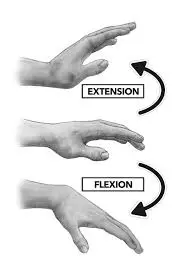
For this exercise, place the forearm on a table and place a piece of cloth beneath the wrists for support. Put the hand facedown by turning the arm. Raise the hand until a slight strain is felt. “Please return it to its original position and then attempt it again.”
Pronation and supination of the wrist
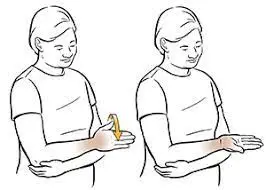
Maintain a sideways arm stance and a 90-degree bent elbow. Turn your forearm so that your hand is looking up, then the other way around so that it is facing down.
Deviation of the wrist
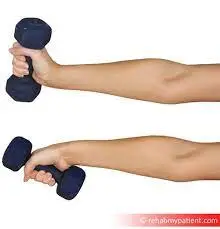
With the hand hanging off and padded beneath the wrist, put the forearm on a table. Thumb facing up, please. “Raise and lower your hand as if you are waving.”
Farmer’s Walk
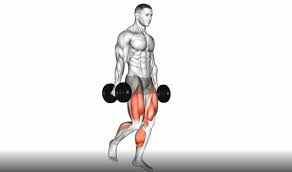
The farmer’s stroll is another excellent wrist-strengthening exercise. This is how you do it: Holding a pair of dumbbells or kettlebells with your palms facing in on either side of your body, take a tall stance.
Cover 50–100 feet on foot.
The farmer’s walk exercise is a quick and easy way to strengthen your core and grip.
Play With Silly Putty
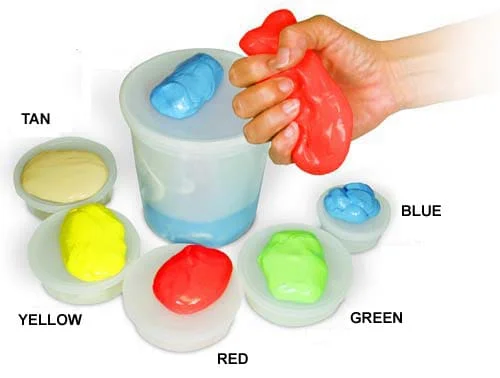
Lastly, playing with therapeutic putty, also identified as therapy, will assist you to strengthen the hand muscles that support the wrists. Use your fingers to roll, squeeze, and distribute the putty for a few minutes each day.
Using therapy putty may strengthen the fingers and grip.
Prayer stretch

To maintain the proper arm position, touch the tips of your fingers to your elbows. Then, slowly spread your elbows apart while keeping your palms together. Lower your hands to your waist height and hold this position. Stop when you feel the stretch or your hands are in front of your belly button.
- Do it again after holding the stretch for ten to thirty seconds.
- Lift one arm to shoulder height in front of you.
- As you face the floor, keep your palm down.
- Your fingers should point downward when you release your wrist.
- Slowly grasp the fingers with the free hand and take them back toward you. Maintain for 10 to 30 seconds.
- Repeat both stretches with the opposite arm. A person should cycle through the stretches 2 or 3 times with both arms.
Clenched fists
Put the open hands, palms up, on the thighs while seated.
Gently clench your hands into fists. Avoid tensing up too much.
- Raise your fists off of your legs and back toward your body, bending at the wrists, with the forearms in contact with the legs.
- For ten seconds, hold.
- Gently spread the fingers apart while lowering the fists.
- Ten times over, repeat.
- Developing wrist and hand strength
- Increasing your wrist strength might also help you stay injury-free.
- Whether you work from home or in an office, there are numerous types of workouts a person can do to improve their strength.
Desk press
Place the palms face up under a desk or table while you’re seated.
Gently press the upper body on the desk’s base.
For five to ten seconds, hold.
Squeeze a tennis ball
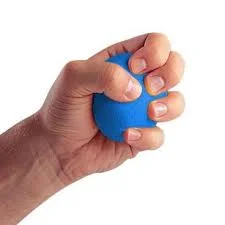
Give a stress ball or tennis ball a firm five to ten-second squeeze.
This shouldn’t hurt. But it is about to help a person to strengthen their wrists.
Thumb work
Push exercise:
Make a fist and raise your thumb as if you were giving someone the thumbs up.
To stop your thumb from moving, provide resistance by using your hand muscles and thumb. Then, use your free hand to gently draw back on your thumb.
Repeat while holding.
Pull- workout:
clench your hand and raise your thumb.
- Apply resistance with your thumb and hand muscles to maintain your thumb pointing up toward the ceiling.
- Gently push the thumb forward with your free hand.
- Repeat while holding.
- Hands and wrists with yoga
- Hand and wrist strength can be greatly enhanced by practicing yoga. Below is a list of some wrist and hand exercises that are inspired by yoga.
Figure eights
- Put your fingers in front of the body.
- Allow the wrists to rotate fully so that both hands are alternately on top of the other.
- Do this motion for 10 to 15 seconds.
- Rest, and then repeat.
- While seated, lift the arms over the head and put the fingers with the palms together.
- Interlock your fingers, palms facing up with your arms straight.
- Hold the stretch.
- Bring your arms down, and then repeat.
Overhead stretch
The workout stretches the muscles in the hands and forearms, while also improving circulation and flexibility.
Eagle-shaped arms
This exercise is inspired by the Eagle position.

- Reach the arms forward so they are parallel to the ground.
- Cross your right arm over your left, with your right arm on top
- Extend your elbows.
- Put your right elbow in the left’s crook. The hands should be in contact with the backs.
- Swing the left arm left and the right arm right. The thumb of your right hand should pass over your left little finger. “Ensure that your palms are facing each other.”
- Extend the fingers, raise the elbows, and press the palms together. They should be aiming for the ceiling.
Prevention
Although it is impossible to prevent the unforeseeable events that usually result in wrist injuries, the following simple suggestions may offer some protection:
Increasing bone density Calcium supplementation can help minimize the risk of fractures. For the majority of individuals, this translates to 1,000-1,200 mg per day.
Prevent falls: The majority of wrist injuries are caused by falling forward into an outstretched hand. Put on appropriate footwear to assist in preventing falls.
Remove any risks in your home and brighten up your space. Additionally, if needed, add handrails on your stairs and grab bars in your bathroom.
Wear wrist guards when participating in high-risk sports like football, snowboarding, and rollerblading, and wear protective gear when engaging in athletic activities.
Consider ergonomics: If you spend a lot of time on your keyboard, take frequent breaks from it. While typing, it is critical to maintain a relaxed and neutral wrist position. This will aid in the prevention of strain or damage. A foam or gel wrist support, as well as an ergonomic keyboard, may be useful.
FAQ
How can a swollen wrist get better?
Make an effort to keep your wrist higher than your heart. This will assist in lowering edema. Apply cooling gel or ice to your wrists for ten to twenty minutes. For the next three days, while you are awake, repeat this every one to two hours, or until the swelling subsides.
Why does my wrist appear bloated and hurt?
A fracture, tendinitis, tendon or ligament tear, or deformed joints close to the wrist, may be the cause of swelling, bruising, or other symptoms. Even if the bone is intact, there’s still a chance that the surrounding tissue or nerves could sustain damage.
What is the duration of a swollen wrist?
An injured wrist is frequently painful and swollen, especially while moving. There might be contusions. A few days to six weeks may pass between the onset and duration of pain and edema.
Should a swollen wrist be wrapped?
Wrap your sprained wrist: Compression bandages and wrist wraps provide additional support for your wrist during the healing process, assist minimize swelling, limit mobility, and lessen the possibility of further injury. The bandages shouldn’t be too tight to the point of tingling or numbness.
How can a sprained wrist be healed the quickest?
Rest: Steer clear of the action that hurt you.
Ice: A few times a day, apply ice packs or a cold compress wrapped in a small towel to your wrist for 15 minutes at a time.
Compression: To help with swelling reduction, you might tie an elastic bandage over your wrist.
References
- Diagnosing wrist & hand repetitive use injuries. (n.d.). NYU Langone Heal
- Hemady, N., & Mirmira, V. (2006, December 1). A Patient with Dyspnea and Swollen, Painful Wrists. AAFP. https://www.aafp.org/pubs/afp/issues/2006/1201/p1909.htmlth.
- https://nyulangone.org/conditions/wrist-hand-repetitive-use-injuries/diagnosis
- Andriakos, J. (2023b, April 7). Wrist pain: Exercises, causes, and treatment. Health. https://www.health.com/fitness/wrist-pain-exercises
- The Healthline Editorial Team. (2019b, May 14). Stretches for wrists and hands. Healthline. https://www.healthline.com/health/chronic-pain/wrist-and-hand-stretches#yoga

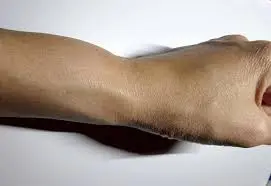

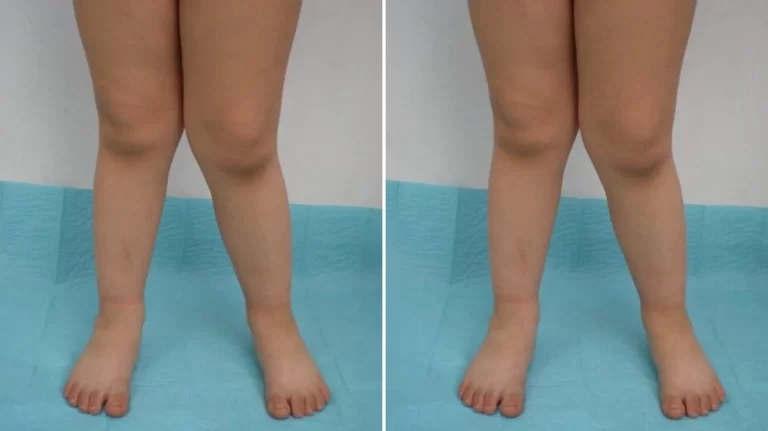

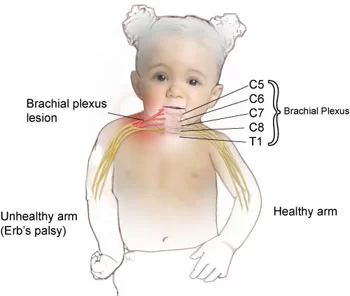

3 Comments